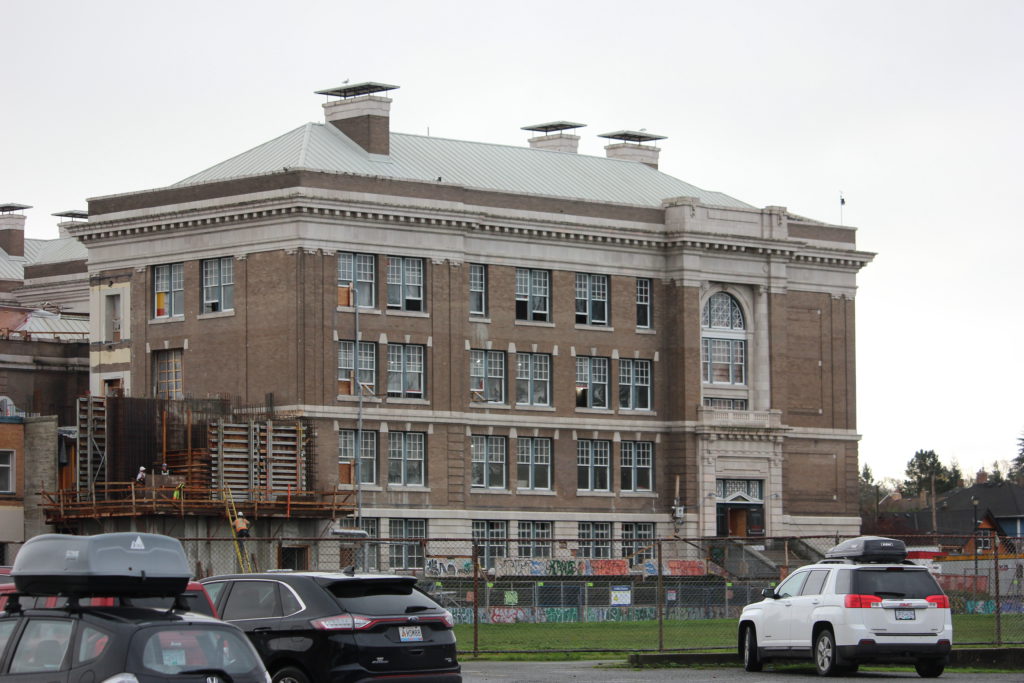
Thousands of school-aged children in B.C. tested positive for COVID-19 in a little over one month, data from the provincial government shows.
A total of 11,759 K-12 students tested positive for COVID-19 between Dec. 15, 2021 and Jan. 18, 2022, according to the latest BCCDC K-12 School situational update report. The number of infections in school-aged children was up 305 per cent from the previous BCCDC report, which shows 2,902 students testing positive for the virus.
Of those 11,759 students who did test positive, 3,660 were ages 0-4, 4,816 were ages 4-11, and 3,283 were ages 12-17. Only 75 students who were infected required hospitalization, according to the report.
The number of infections recorded in students ages 0-4 between Dec. 15 and Jan. 18, 2022 accounts for nearly 70 per cent of all cases recorded in that age group for the entire 2021-2022 school year. Meanwhile, the number of 12-17 students who tested positive during the same period accounts for more than half of all infections recorded in that age group for school year.
RELATED: 84 Vancouver Island schools added to COVID exposure tracking website since Jan. 24
Meanwhile, when it comes to vaccination rates, the 0-4 age group is not eligible for vaccine and only 48 per cent of those 5-11 have one dose of vaccine, according to the report, which notes that nearly 90 per cent of kids 12-17 have one dose and 83 per cent have two doses.
The BCCDC report covers a period of widespread infection throughout B.C. due to the highly transmissible Omicron variant and when the majority of children were either partially vaccinated or not vaccinated at all. It should also be noted that children were not in school for the majority of the timeframe covered in the report due to the Christmas break and the one-week delay in early January.
Furthermore, the true number of positive cases among K-12 schools is likely far higher than what is mentioned in the report due to the province’s decision to severely restrict testing in December — something the report itself even acknowledges.
“Changes to the testing strategy, as well as the expanded use of rapid antigen tests, have implications for the data presented in this report. While still a useful indication of trends over time, case counts and rates reported since late December are based only on PCR tests and underestimate the true incidence of COVID-19 cases in B.C.”
B.C. public health now provides even less information about the situation in schools than it even in November as exposure and cluster notifications are no longer being issued, which the report also notes.
“Omicron spreads rapidly and contact tracing and notification have become less effective in the timely management of this COVID-19 variant,” the report states, later adding. “The shift towards more focused testing guidance, self-management, and a reduced role for traditional contact tracing means public notifications of potential exposures and case clusters are no longer viable measures of the COVID-19 situation in K-12 schools.”
RELATED: Expert pushes back on Bonnie Henry’s claims schools are not a major source of transmission
Terri Mooring, president of the British Columbia Teachers Federation, said the high infection figures wasn’t unexpected.
“This information, it is not surprising,” she said. “We are seeing it play out in schools right now with higher than usual absence rates.”
Late last month, Mooring said has been a “complete vacuum of information” when it comes to what is going on in schools — something she feels the same about today.
“There’s a lack of information and a lack of clarity,” she said. “We were hoping that school districts would be at least allowed to facilitate information. In other words, when a family contacted them about a child being a positive for COVID, that they would at least facilitate that information in the school community, but the provincial health office and local health authorities were not willing to delegate that responsibility for schools.”
Island Health only posts notifications on its website when a school is dealing with an outbreak but does not mention functional closures. School districts have not been posting exposure or cluster notifications publicly since the beginning of the 2021-2022 school year.
“There is no reason why a school can’t facilitate the sharing of data in a confidential way, no information is incredibly stressful for families and staff,” Mooring said.
The majority of information of late has come from B.C. School COVID Tracker, a crowd-sourced independent website that provides updates on exposures, clusters, threshold limits and functional closures at schools.
Mooring said the lack of real-time information isn’t helpful.
“The health authorities used to put on their websites when there was a functional closure at a school or closure, that’s no longer happening either,” she said. “We’re reliant on kind of word of mouth, around when functional closures are even happening . . . and this lack of information is really problematic.”




